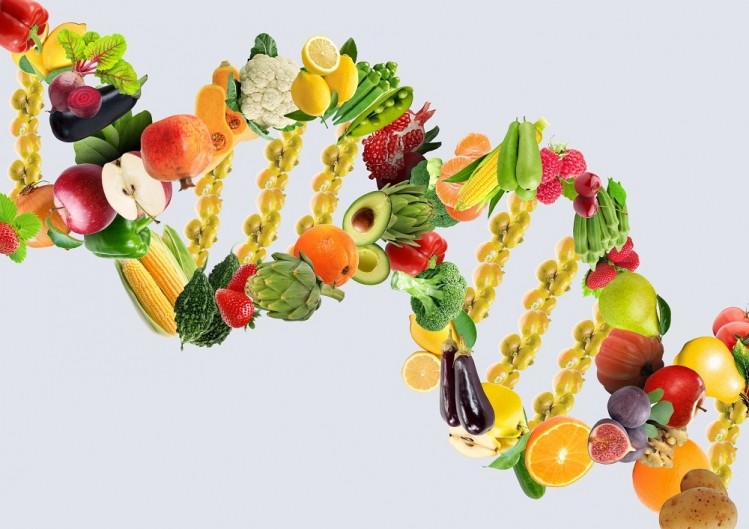Duas Rodas explores the big questions in nutrition

Personalized nutrition is gaining traction as consumers are increasingly seeking “divergent interests, tastes and habits”, said Steven Charles Rumsey, PhD, General Manager of Technology and Innovation at Duas Rodas.
Age demographics, in particular, are impacting nutritional attitudes, behaviors and preferences. The need for convenience to support busy lifestyles, for example, is a key fulfillment request. With “millennials currently being the primary influencer in the marketplace”, Rumsey says that although millennials “value both indulgent as well as healthy foods”, natural and clean label items are highly-sought-after.
Clean Nutrition
The presence of clean nutrition is strong in the marketplace. Free-from labeling claims, factual efficacy and the environmental benefits of nutritional products, the steer towards biodegradability and sustainable production management impact consumer choices.
“Artificial as a public enemy is the new global reality with a global ‘natural’ trend expanding and putting increasing pressure on artificial ingredients,” Rumsey commented.
Clean beauty was born from a demand to lower artificial flavors, colors, sweeteners and preservatives. The trend has now evolved to center around ingredient selection and circulation that not only affects our personal nutrition but also the wider health of the environment.
Sustainability and ethics, animal welfare, GMO, the use of pesticides and farming methods are key decision-making factors among consumers.
Health and environment-based eating
As the holistic nature of nutrition and its connectivity to the wider planet grows, the relationship between health and nutrition remains a vital consideration. Robust manufacturing standards, and quality control processes, along with increasing interest and knowledge on ingredients and food biology combine to impact nutrition product launches that reflect consumer needs.
The double burden of malnutrition is a core concern in Latin America. Health prevention of the onset of non-communicable disease and sufficient nutrition are high on the agenda for governments, organizations and manufacturers to focus their priorities.
Commenting on the impact this has on nutritional preferences, Rumsey added: “The mindset of the consumer, especially in more developed nations, has shifted from a focus of obtaining foods for sustenance and pleasure, to include an increasing focus on foods that help support a healthier life.”
Sensory experiences
Novel sensorial experiences are particularly important to millennials that seek out new innovations. Combining sweet and salty flavors, fruit with spices or more adventurous textures are rising in popularity.
Highlighting how consumers want sensory engagement and innovative nutrition experiences, Rumsey added: “Thus, the technical community must throw out previously learned lessons and ingredients and, presented with significantly novel challenges, must rediscover the best formulations and ingredients to provide excellent final sensory characteristics.”
However, the balance between retaining and raising the prevalence and quality of nutritional characteristics within food and beverages, and optimizing the sensory elements such as taste, texture and odor that appeal to consumers, remains challenging.
To satisfy both requirements, we can expect to see the use of digitalization via the likes of flavor enhancers, modifiers, sensory blockers and harmonization to achieve the ideal consumer balance without compromise.
Rather than adopt a blanket approach to lowering sugar, fat or salt, or lift the level of nutritious ingredients such as fiber or protein, Rumsey confirmed that food composition alterations “must be analyzed on a case-by-case basis to understand the effect that these changes may have on key sensory attributes”. Once obtained, ingredient and flavor profiles can then modified and formalized to create an appealing product.
Honest communication
Amid the social media backdrop and emphasis on strong communication that broadcasts both positive and negative views, storytelling that provides “context and connection” is pivotal among LATAM brands.
Currently, providing more information and education, producing innovative technical solutions as well as adopting a full-disclosure and transparent approach to ingredients and manufacturing is dominating the nutrition industry.
To overcome mistrust in the food science area, the industry needs better scientific nutritional knowledge and personable accounts from family, friends and online content via blogs. With this shift and change in consumer opinions, brands now need to “adopt new product composition and communications strategies”, Rumsey stated.
Consumer choice reigns
Despite innovation, formulation and communication strategies revolving around strong science and anecdotes relating to nutrition, consumers want to be healthy and enjoy their food.
Attributes such as flavor, texture, color, moisture retention and shelf life are also priorities for purchasers. For example, while sugar sweetens food, these factors are also primary considerations for consumers.
Consumer opinion can dictate popularity. Although safety and use data are present, synthetic sweeteners including “compounds such as Cyclamate, Saccharin, Sucralose, Neotame, Acesulfame-K, and Aspartame are now perceived as ‘artificial’ and unpopular by more health-conscious consumers”.
Alternatively, innovative and natural variants such as “Stevia and Monk Fruit as well as sugar alcohols such as Erythritol, Isomalt, Lactitol, Sorbitol and Xylitol have gained ground”, Rumsey revealed.
Novel sweetness options are available on the market as possible formulation components. Allulose, which is a combination of rare sugars, and sugar-containing structural innovations, such as Nestle’s Sugar crystals and Sudzucker Group’s DouxMatok, fit this category, Rumsey added.








